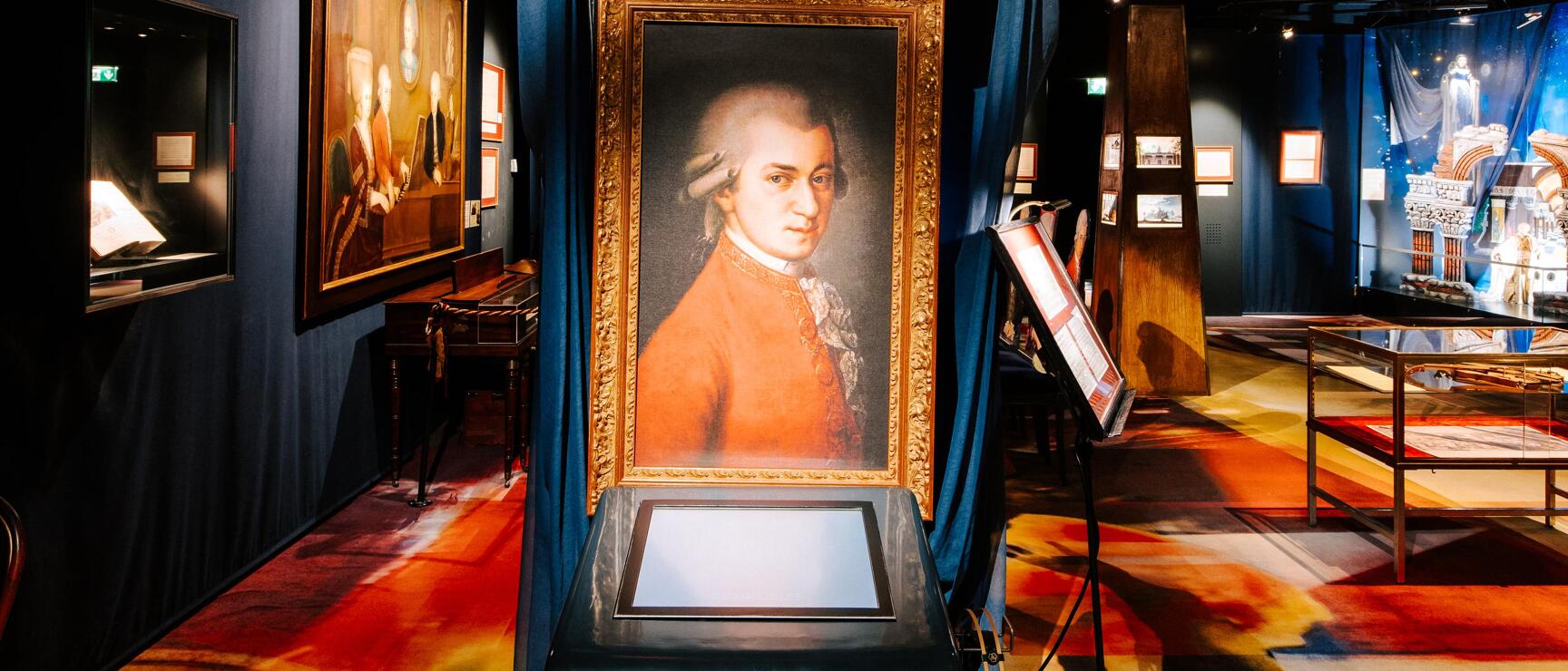
Mozart Highlights in Vienna
Discover the Mozarthaus Vienna & the House of Music
Born in Salzburg, Wolfgang Amadeus Mozart moved to Vienna at the age of 25, where he would spend the final 10 years of his life. During this time, Vienna became the heart of his creative output, and it was here that he composed some of his greatest masterpieces.
Today, Vienna offers countless ways to explore his life and legacy. From the historic Mozarthaus Vienna, where he lived during his most creative years, to the interactive exhibits at the House of Music, the city invites you to step into the world of one of classical music’s most iconic figures. Immerse yourself in these extraordinary exhibits that bring his life, music, and lasting influence to vibrant life.
The highlights at a glance
See the only remaining of Mozart's apartments and follow in the footsteps of him and his family
Explore interactive exhibits showcasing Mozart's legacy and influence on classical music
Learn about his creative career and some of his most significant works
Get to know Mozart from a personal angle and learn about his social life in 18th-century Vienna
Dive into the world of sound and Vienna's composers
Transform your name into a unique Mozart composition with the "Namadeus" game
Ticket tip: Buy a combo ticket at either museum for access to both at a reduced price!
1. Explore the Mozarthaus Vienna, where Mozart once lived
Just steps away from St. Stephen’s Cathedral, in a small cobblestone street, sits the historic apartment building. The famous composer and his family lived there from 1784 to 1787, during which time he created some of his finest masterpieces. Within his 10 years in Vienna, Mozart moved 13 times, with the building at Domgasse 5 being the only remaining of his 13 residences.
The apartment was the largest, most elegant, and most expensive apartment ever housed by Mozart. Some of the rooms have original stucco ceilings and wall paintings that portray how the apartment must have been decorated in Mozart’s time.
Follow in the footsteps of Mozart and his family and take a comprehensive tour through the composer’s life and the era he lived in.
2. Learn about Mozart’s life & achievements
The museum’s three floors focus on Mozart’s years in Vienna, exploring his life in 18th-century society, the places he performed, and the cultural context of the time. Learn about his social life, his friendships and rivalries, and his vices, including womanizing, gambling, and reckless spending.
Mozart composed 626 works before his death at 35, with many of his greatest pieces created in the very rooms of today’s Mozarthaus Vienna, including "The Marriage of Figaro" and the Haydn Quartets. A highlight is a musical clock from around 1790, playing Mozart's “Andante for a cylinder in a small organ” (KV 616).
The museum also features a holographic performance of "The Magic Flute" and a media installation of "Figaro Parallelo," showcasing international productions and director interpretations, along with a tribute to Mozart’s “Requiem” and his final days in Vienna.
Your next stop is the House of Music, just a 10-minute walk away through charming cobblestone streets that transport you back to Mozart’s time.
Be sure to pass through Blutgasse (one of the oldest areas in Vienna) and Franziskanerplatz along the way to fully experience the historic atmosphere.
3. Discover the House of Music
The House of Music is a dynamic, interactive museum where sound and music come to life in exciting and unexpected ways. Across four floors, you can engage with music in immersive, hands-on exhibits – from creating your own melodies to learning how babies first experience sound in the womb.
Don’t miss the chance to virtually conduct the world-famous Vienna Philharmonic Orchestra or explore the fascinating "sound staircase" that guides you through different auditory worlds, making every step a new discovery.
More than just an exploration of music, the House of Music celebrates Vienna’s rich classical legacy, including the lives of legendary composers like Mozart.
4. Play Mozart's musical game "Namadeus"
In 1787, Mozart came up with the idea for a musical game (KV 516f.), in which he wrote two bars of music for each letter of the alphabet, along with two alternative sets for each. Players could combine these according to a complex set of rules to turn their name into a melody.
At the Haus der Musik in Vienna, this musical game has been recreated as an interactive program called "Namadeus." You can playfully transform your name into a unique Mozart composition and even collect the score in Mozart's original manuscript as a souvenir.